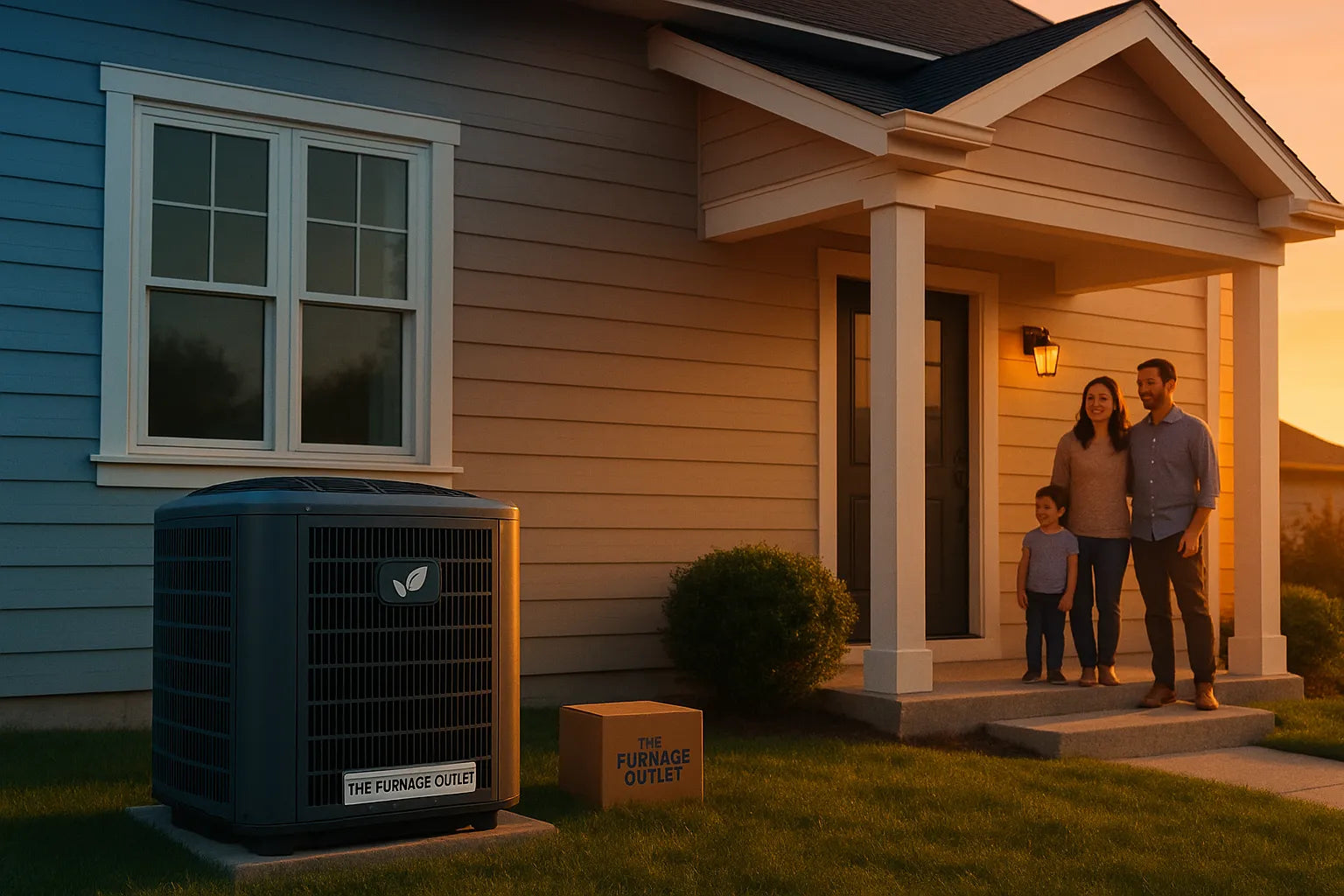Why Central AC Sizing Matters More Than You Think
Picture walking into a friend’s house on a blazing July afternoon yet it feels clammy instead of cool. Odds are the system is the wrong size. Too big and it short-cycles, leaving humidity behind. Too small and it never catches up, running your meter nonstop. Proper sizing isn’t marketing fluff; it protects comfort, energy bills, and equipment life.
A well-matched unit can cut cooling costs by 20-30 percent compared with a guess-sized one, and it keeps coils dry so mold and rust don’t steal years off the system.
Start with a Professional Manual J Not Guesswork
Skip the “tons per square foot” myths. An ACCA-approved Manual J load calculation weighs ceiling height, insulation, window orientation, occupancy, and even kitchen heat. Most pros run the numbers with software, but you can preview the process using The Furnace Outlet’s free Sizing Guide. Bring those figures to your installer so everyone’s talking the same language. The result often surprises homeowners: a 2,400 sq ft Florida ranch might need 2.5 tons, while a 1,800 sq ft poorly insulated Michigan cottage could call for 3 tons. Starting with data guards you from over-buying equipment—and from arguments with inspectors later.
How to Decode Your Existing Unit’s Capacity Label
Before replacing an old unit, snap a photo of the outdoor condenser nameplate. Manufacturers usually embed BTU capacity in the model number: “36” means 36,000 BTU (3 tons). Cross-check that against your Manual J result. If the label shows 48,000 BTU but your new calc says 30,000, your old system was oversized all along—explaining that swampy feeling on humid nights. Knowing the current capacity also helps your contractor quote apples-to-apples options from TFO’s high-efficiency R32 condensers. Keep the photo in your project folder; inspectors and warranty reps may ask for it.
Using Climate and Home Details to Fine-Tune BTUs
Load calculations adjust for more than footage. Climate zone swings can shift tonnage by 20 percent. Sun-soaked south-facing rooms, vaulted ceilings, and single-pane windows all add heat the way extra burners add BTUs on a gas stove. Conversely, shade trees, attic insulation, and low-E glass subtract load. A pro will enter these variables so your new unit isn’t designed for an imaginary average home. If you’re DIY-curious, TFO’s Design Center can walk you through the inputs and suggest matching air handlers or packaged units.
The Hidden Costs of Oversized and Undersized Systems
An oversized system reaches the thermostat point fast—but turns off before it wrings out humidity. The stop-and-go makes compressors start harder, shortening life. Undersized units do the opposite: they marathon all day, spiking utility bills and leaving bedrooms stuffy. Either mistake can cancel warranty coverage if the manufacturer’s capacity tables were ignored. Worse, building inspectors in many jurisdictions now check Manual J reports against equipment tags. Fail, and you’ll pay for a re-inspection. Spending an extra hour on sizing saves months of future headaches.
Checking Efficiency: SEER2 and Future Energy Bills
Once capacity is nailed down, compare efficiency ratings. The newer SEER2 test better reflects real-world static pressure and duct losses. Federal minimums vary by region, but aiming a point or two higher often pays back in five summers—especially with utility rebates. Browse The Furnace Outlet’s R32 AC & Gas Furnace combos for systems that blend high SEER2 cooling with 95 % AFUE heating. Just remember: a 20-SEER2 unit still wastes energy if ducts leak or the tonnage is wrong, so treat efficiency as the icing, not the whole cake.
Navigating Codes: IMC, IECC, NEC & Local Rules
Sizing is only half-credit; code compliance earns the full grade. The International Mechanical Code (IMC) governs equipment selection and airflow. The IECC sets minimum efficiency, while the NEC covers wire size, overcurrent protection, and disconnect placement. Many states also reference ASHRAE 62.1 for ventilation. Most inspectors want to see stamped load calculations plus product spec sheets proving compliance. Your contractor should pull permits, but the homeowner is liable if work proceeds without them. TFO’s Help Center keeps a code-checklist PDF you can print and bring to the permit desk.
Permits, Inspections, and Paper Trails You’ll Need
Expect at least two inspections: rough-in (ducts, line sets, wiring) and final startup. Save copies of permits, load calcs, and equipment invoices in a cloud folder labeled “HVAC—Central AC 2025.” Future buyers, warranty claims, and insurance adjusters will thank you. Many manufacturers now require proof the install met local code before honoring compressor coverage. Tip: ask your installer to upload the commissioning report—refrigerant charge, subcool, superheat—to your folder. It’s the AC equivalent of a vehicle’s maintenance log and can boost resale value.
Ductwork, Wiring, and Safety Checks Before the Truck Arrives
Even a perfect-size unit fails if the supporting cast is weak. Undersized ducts raise static pressure, strangling airflow and voiding SEER2 claims. Old aluminum wiring or too-small breakers trigger NEC red flags. Before installation day, have your contractor pressure-test ducts and perform a circuit load calc. If you need supplies, The Furnace Outlet stocks line-sets and accessories that ship with the unit so the crew isn’t scrambling for parts. A clean job site and right-size components keep inspectors—and your wallet—happy.
Homeowner’s Quick Central-AC Sizing Checklist
Use this snapshot the night before you sign the contract:
-
✔ Manual J on file—reviewed and matches quoted tonnage.
-
✔ Unit meets regional SEER2 minimums (or better).
-
✔ Permits pulled and code checklist printed.
-
✔ Ducts sized & sealed; repairs noted in bid.
-
✔ Electrical circuit and breaker sized per NEC.
-
✔ Refrigerant line set length and size confirmed.
-
✔ Post-install inspection scheduled with AHJ.
-
✔ All documents stored in HVAC folder.
Start with our Free Sizing Guide to get the right-ton AC for your home: The Furnace Outlet.







